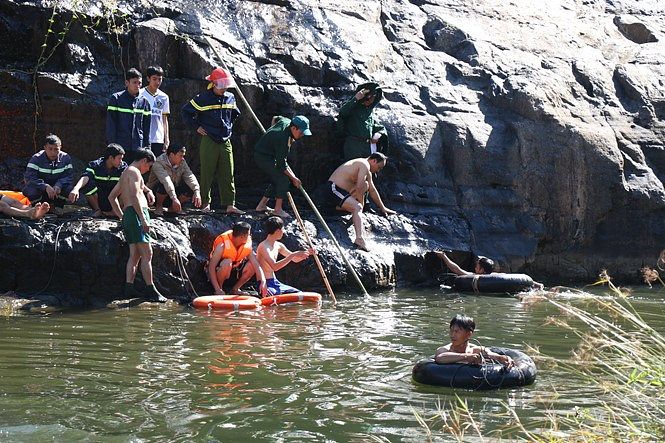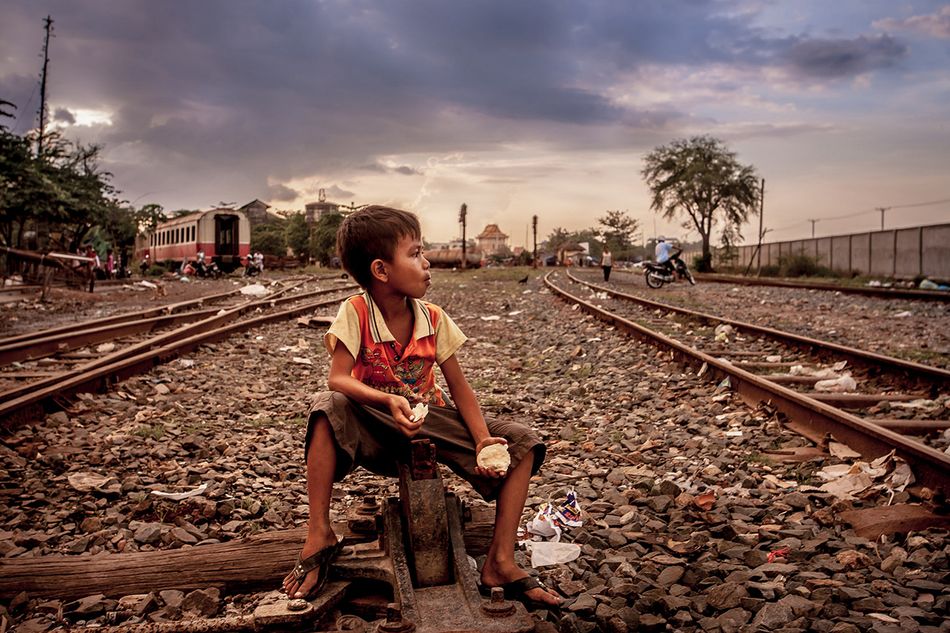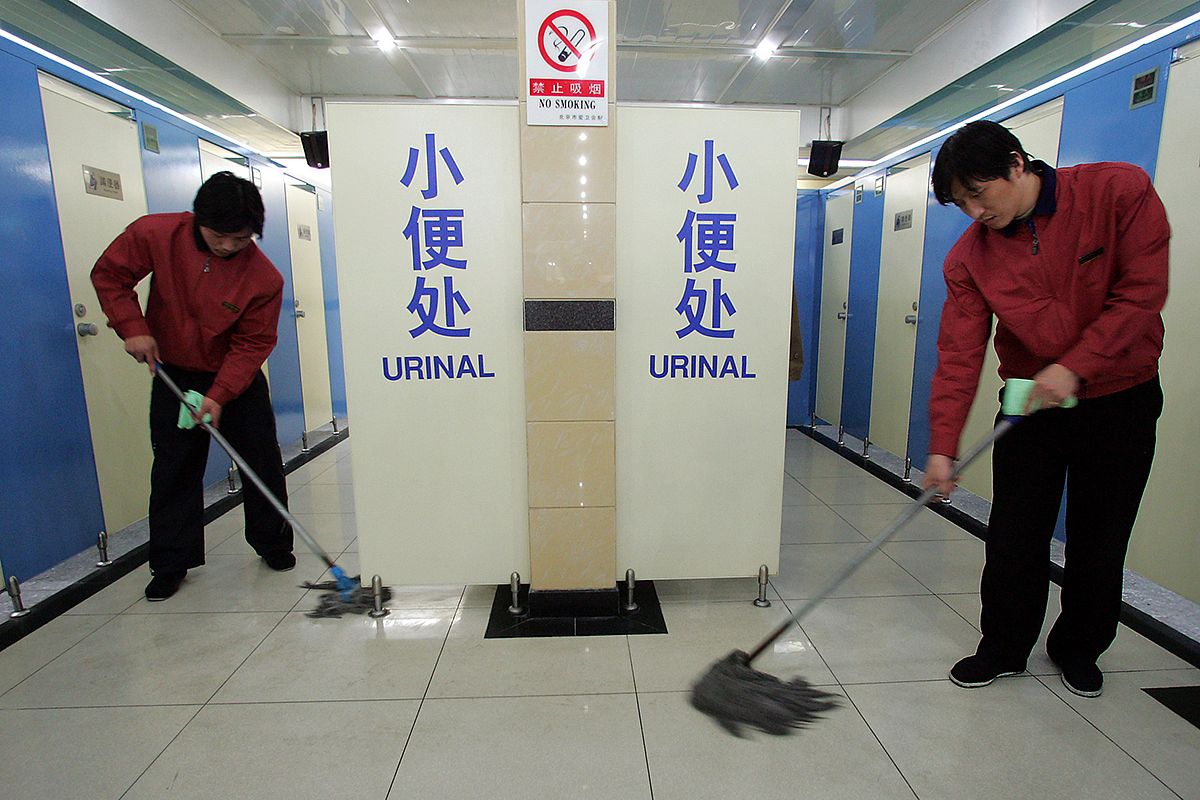With an expected 13 million international visitors this year, not to mention an ever-increasing number of domestic tourists, Vietnam’s tourism industry is growing at a rapid pace. Across the country, local officials have sought to develop their province’s destinations, while tourism providers seek to invest in scores of new man-made attractions.
Though these efforts have already begun in Mai Chau, for now the area’s approach to visitors is a refreshing take on local tourism: laid-back, welcoming and able to cater to the increasingly diverse group of tourists coming to Vietnam.
After a two-hour ride from Hanoi, I arrived in town and found a homestay among the cluster of traditional Thai stilt houses in the area. My host, Hien, gave me the lay of the land. There was Poom Coong, the modest village around us, home to a few homestay-restaurant hybrids and a craft shop or two. They didn’t get too many visitors, she explained. It was quiet, and usually preferred by solo travelers and small groups. On foot, you could cover Poom Coong in 10 minutes or less.



Stilt houses and Thai embroidery in Poom Coong.
Next door is the slightly noisier neighboring village of Ban Lac. Roughly twice the size of Poom Coong, it is still easily covered on foot, though the main road is much more active: morning, noon and night, women man the barbecues in front of a pair of restaurants, while its souvenir shops feature a wide variety of items, including the requisite backpacker pants and dreaded banana print attire that have become ubiquitous across Vietnam.
Larger groups – students from Hanoi, Chinese tourists, the odd handful of middle-aged Europeans – stroll the narrow streets snapping photos and shopping for knickknacks. Where Poom Coong remains a smaller, quieter destination, Ban Lac makes a more concerted effort to draw in visitors and help them part ways with their money.


Ban Lac's souvenir-heavy streets.
Hien relayed this information without judgment as she picked at the lunch dishes scattered across our table. Though their personalities were different, she argued, the two towns complemented one another. Groups tend to prefer the lights and noise of Ban Lac, while independent tourists and those traveling by motorbike stick to Poom Coong. If you didn't like one, you stayed in the other; if you didn’t like either, then perhaps Mai Chau was not the destination for you.
Logical as this attitude may seem, it is not always present in Vietnam’s travel industry. Though tourism infrastructure is often a welcome development at local destinations, some “improvements” draw mixed reactions from visitors, not to mention local residents. In Sapa, for instance, construction has transformed the sleepy hill town into a fast-growing tourism hub for the northwest, complete with a cable car to Vietnam’s highest peak. In Ha Long, known for its local folklore and stunning natural scenery, you can now visit Southeast Asia’s largest theme park.
For some tourists, the modern spectacle of a roller coaster on a UNESCO-protected bay or a safari park on the shores of Phu Quoc is a welcome one. Others prefer to appreciate nature without the contemporary touches of tourism development. These contrasting approaches to travel are, perhaps, one of Vietnam’s greatest tourism challenges: how will the country cater to the vastly different wants and needs of international travelers from all corners of the globe?
For now, it seems, different destinations are content to appeal to different people. Earlier this month I took a trip to Nha Trang, where nearly every visitor I encountered was part of a large Russian or Chinese tour group. For better or worse, gone were the twenty-something western backpackers roaming the blocks of tourist-friendly shops and restaurants near the beach. Hoi An, on the other hand, seems to maintain its attraction among independent tourists, even as massive groups of camera-toting Europeans traipse through the streets of the Old Town.



Rice fields surround Mai Chau.
As an up-and-coming destination, Mai Chau has managed to provide tourists with the best of both worlds, at least for now. Whether you’re wandering the more commercial streets of Ban Lac or taking a quiet walk through Poom Coong, the hard sell of many other Vietnamese tourist destinations does not come in to play. Beyond these two villages, the narrow, concrete paths leading deeper into the Mai Chau countryside are frequented by visitors on bicycles and quiet, environmentally friendly electric carts. Dense, green hills roll into sprawling rice fields, occasionally interrupted by a small house or drinks shop. With most of the town itself clustered around Route 15, a turn off the highway and onto Mai Chau's smaller roads is all it takes to find yourself off the beaten path.
But perhaps best of all is Mai Chau’s approach to sightseeing and other tourism activities. For families like Hien’s, the rise in local visitor numbers has meant a small but steady income by way of homestay guests and a handful of other services, but nobody in Poom Coong or Ban Lac seems eager to change the surrounding landscapes to appease their guests.
For the more adventurous, it’s worth heading out past Go Lao Falls to Ba Khan, an area overlooking Song Da Lake. Though its turquoise waters and surrounding shores aren’t set up for heavy tourism, the trip affords a scenic drive at the very least and, if you’re lucky, an opportunity to hire a boat and get out on the water among Song Da’s tree-covered islands. A newly opened branch of Asia Outdoors also operates rock climbing, kayaking and trekking tours out of Mai Chau, while a handful of enterprising residents in Poom Coong and Ban Lac can also point you in the direction of local caves and Sunday markets, which tend to draw not only the Thai, Mai Chau’s largest ethnic group, but also H’mong and Muong vendors.



Mai Chau's low valley gives way to mountain roads and Go Lao Falls (top right) before leading on to views of Song Da Lake (bottom image).
As Vietnam’s tourism development seeks to provide for a diverse group of both foreign and domestic travelers, change is an inevitability. But for the moment, at least, Mai Chau seems to have its own brand of easygoing local tourism figured out.














